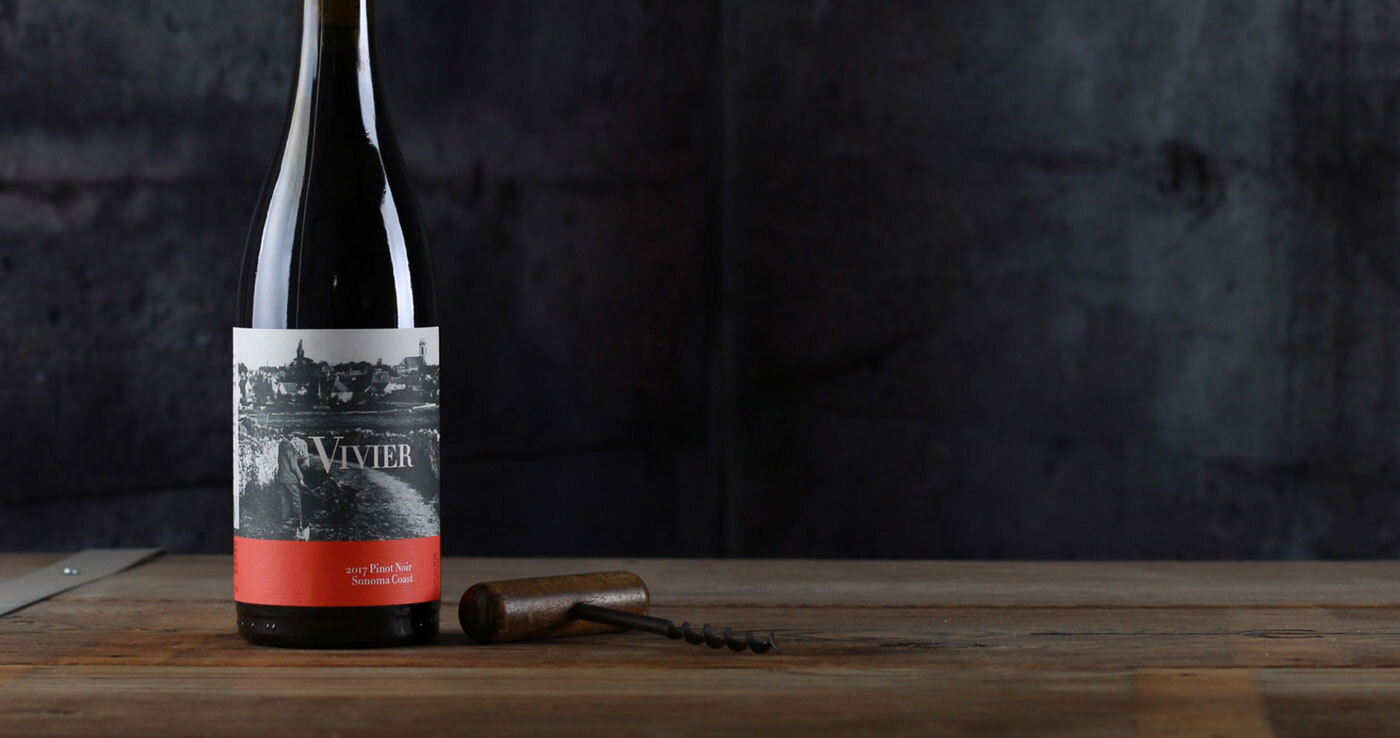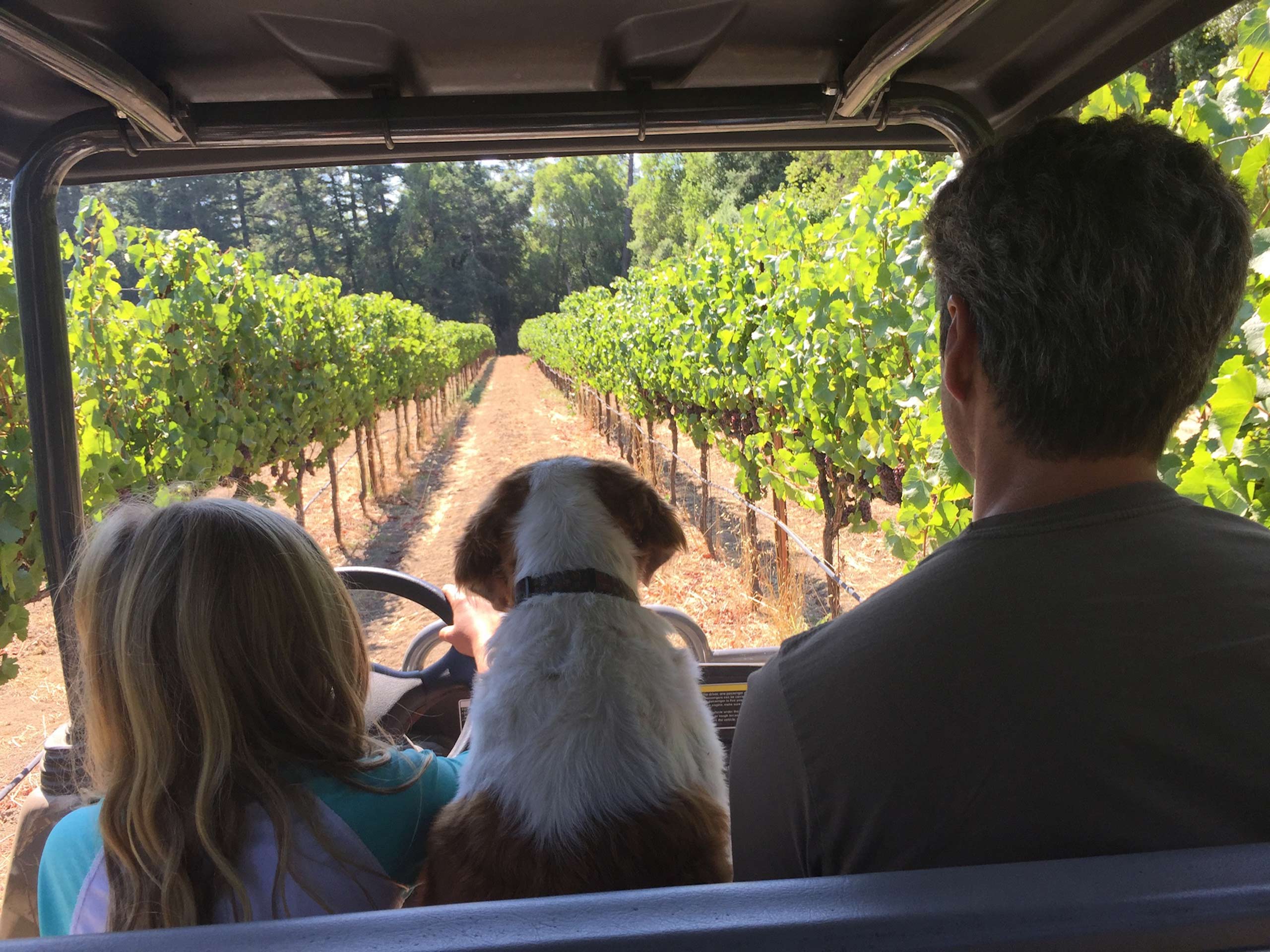A Note from Ian Cauble
Vivier, Pinot Noir
Sonoma Coast, California 2017
“We feel truly lucky to offer Stéphane Vivier’s Sonoma Coast Pinot Noir today. This wine reaffirms our faith in the future of Californian Pinot. It’s nothing short of breathtaking, with the aromatic intensity and textural sophistication of a wine two, three, four times its price. –Ian Cauble, Master Sommelier”

Perhaps it’s no surprise it’s made by a Frenchman and the vines have mysterious Burgundian origins. But ultimately, this wine is American down to its molecules; a shining example of the potential for carefully farmed Sonoma Coast fruit to rival the best Pinot from anywhere in the world. Vivier consults for several high-profile wineries including Hyde de Villaine, the combined effort of California’s Hyde family and Aubert de Villaine of Domaine de la Romanée-Conti. Aubert hand-picked Stéphane to impart the strictest French techniques on their Californian wines. His rigorous classical training means Stéphane’s personal projects can afford to be a little whimsical. Look at the cork on today’s Sonoma Coast Pinot, for example. It says, “American wines made by a lazy French winemaker.” The wine inside is one of the most impressive Californian Pinots to date, but Stéphane makes it look effortless, even fun. Most importantly, his wine is priced for the discerning collector; you can afford to buy in larger quantity and follow the evolution of this wine over the next decade-plus. This is an exciting new label that is not to be missed!
Stéphane Vivier’s path to winemaking has been anything but traditional. He and his brother played soccer every afternoon in the town of Beaune, at the heart of the Côte d’Or. Their neighbor owned vineyards and a particularly fine set of terracotta planters that the Vivier boys kept breaking with their soccer ball. Stéphane’s first brush with viticulture was to pay off the broken flower pots. He enjoyed those afternoons in the vineyard enough to continue working for his neighbor — first for the pocket money, and the tan, but then for the beauty of the viticulture itself. Stéphane’s fascination with the vineyard eventually led to a masters in biochemistry quickly followed by a second masters in viticulture and enology.
At the heart of this bottle lies a mystery. The vines were propagated from old Burgundian cuttings planted in the mid-1980s. These weren’t “suitcase cuttings” — stolen pieces of vine smuggled into the US — they were actually given as presents to the American vineyard owners visiting France at the time. This is the process of massale selection, the oldest way of growing vineyards with extraordinary pedigrees. There are a lot of rumors as to which Burgundian village the vines originally belonged to; my nose tells me Chambolle-Musigny or even Vosne-Romanée, but the secret is too well-guarded to get an official answer. Close your eyes, take a sip, and you’re standing right in Premier/Grand Cru Côtes de Nuits real estate for a New World Pinot price tag. Simply incredible.
What we do know is that those mysterious cuttings are growing in the Petaluma Gap region on the Sonoma Coast. The vines are farmed sustainably on shallow, sandy clay without the use of herbicides. Stéphane has been dry-farming for the past six years, resulting in tiny berries with extreme intensity and freshness. His Sonoma Coast Pinot Noir is a blend of the best characteristics of several different plots to create a layered whole. The wine is aged in seasoned French oak and bottled without fining or filtration. Stéphane might joke about being a “lazy” winemaker but his approach is hands-off for a very good reason. With fruit this elegant, any heavy-handed winemaking would eclipse the nuance and perfect natural balance of the wine.
The wine is a deep, dusty rose with a lighter pink rim. Decant it for an hour and pour into Burgundy stems at 60 – 65 degrees. The first thing you notice is a truly extraordinary perfume rising up to meet your nose. It’s at once earthy and sweet: black cherry, spicy California bay leaves, wet earth, and sticky balsamic. The flavor profile is similarly sophisticated, with an intoxicating top note of candied blood orange and white pepper enlivening an otherwise earth-driven palate. The wine feels smooth as a pebble; tightly knit tannins give it shape without weight, generous and fresh at the same time.
And with food? I won’t lie. I drank this with a carnitas tacos from my favorite local truck and it was a revelation. But try a slab of slow-roasted king salmon with fresh cherry tomatoes, or get really fancy and put grilled duck hearts on dense country bread with a smear of pepper jelly. The wine will cellar beautifully for another six to nine years, but it’s going to be impossible to wait that long. Jump on this!
“This Sonoma Coast Pinot Noir walks the tightrope right between the plush aromatics of New-World Pinot and the savory, floral restraint of our favorite Burgundies.”
___

